About Bipolar Disorder
Learn More About Bipolar Disorder
Bipolar disorder is a severe form of mental illness that has the potential to cause significant disruption to the lives of sufferers. Characteristics of bipolar disorder include profound emotional disturbances and dramatic changes in mood, energy, and activity levels. Far more problematic than the usual ups and downs that all people experience from time to time, the symptoms of bipolar disorder can impair a person’s ability to function in a positive and productive manner. Individuals who are dealing with bipolar disorder may be incapable of meeting their responsibilities at work and/or in school, and may also experience great difficulty achieving and maintaining healthy interpersonal relationships.
There are three main types of bipolar disorder. When one receives a diagnosis of bipolar disorder, that diagnosis will be classified into one of three types depending on the types and severity of symptoms that he or she is experiencing. These types include bipolar I, bipolar II, and cyclothymia and are described briefly in the following:
Bipolar I is characterized by dramatic shifts in mood, including at least one manic episode. Manic episodes are defined as distinct periods of abnormally elevated mood along with persistently increased goal-directed activity or energy that lasts for at least one week. Individuals who suffer from bipolar I disorder also commonly experience major depressive episodes, but the presence of depression is not required for this diagnosis.
Bipolar II is characterized by recurring episodes consisting of one or more major depressive episodes and at least one hypomanic episode. Major depressive episodes involve profound sadness, loss of energy, fatigue, and feelings of hopelessness or helplessness that last for at least two weeks. Hypomanic episodes involve elevated mood and persistently increased energy lasting for at least four days. It is important to note, however, that hypomanic episodes are not as severe as manic episodes.
Cyclothymic disorder is characterized by chronic fluctuating mood disturbances, featuring several periods of hypomanic symptoms and distinct periods of depressive symptoms. None of these symptoms will be severe or disruptive enough to meet the full criteria for either hypomania or major depression, but they will persist for at least two years with no greater than a two-month period during which the sufferer is free of all symptoms.
Living with untreated bipolar disorder can be a difficult experience. However, by receiving care at an effective bipolar treatment program, individuals who have been struggling with bipolar disorder can learn how to manage their symptoms in the context of a healthy and productive life.
Statistics
Bipolar Disorder Statistics
According to the Depression and Bipolar Support Alliance (DBSA), about 2.6 percent of the adult population in the United States, or about 5.7 million individuals aged 18 and above, will meet the criteria for one of the forms of bipolar disorder in any given year. The National Institute of Mental Health (NIMH) reports that 82.9 percent of cases of bipolar disorder are classified as severe.
Though data on bipolar disorder among younger people is less extensive than among adults, small-scale studies conducted by NIMH researchers suggest that the prevalence of bipolar disorder among adolescents and teenagers is similar to the rate at which this illness occurs in adults.
Mental health experts estimate that more than 50 percent of people who have bipolar disorder are not currently receiving treatment, and that between 15 and 17 percent of people with bipolar disorder will commit suicide.
On a global level, the World Health Organization (WHO) reports that bipolar disorder is the world’s sixth leading cause of disability.
Causes & Risks
Causes and Risk Factors for Bipolar Disorder
The majority of mental health experts agreed that there is no single cause of bipolar disorder. Years of studies suggest that several factors can influence a person’s predisposition for developing bipolar disorder and can help determine the onset or severity of the symptoms that he or she may experience. Consider the following explanations for why and how a person can come to suffer from bipolar disorder:
Genetic: Heredity plays a significant role in determining whether or not a person will develop one of the forms of bipolar disorder. Several studies suggest that having a biological parent who suffers from bipolar disorder greatly increases the likelihood that a person will also struggle with this illness. A person whose non-identical twin has bipolar disorder has a one in four chance of also developing this disorder or if he or she has an identical twin that has bipolar disorder, his or her risk factor increases by 800 percent.
Environmental: Environmental factors have been identified as having the potential to trigger the onset of symptoms, or to influence the severity of these symptoms, in people who are genetically predisposed to bipolar disorder. For example, a traumatic life event, such as an assault, a serious illness, or the death of a loved, one may lead to a manic, hypomanic, or depressive episode. Also, abusing alcohol or another drug can impact the brain in such a manner that symptoms of bipolar disorder are elicited and/or exacerbated.
Risk Factors:
- Family history of bipolar disorder
- Family history of depression or other mental health conditions
- Prior presence of mental illness
- Having a brain with a smaller than normal prefrontal cortex
- Being abused or neglected (if also genetically predisposed to bipolar disorder)
- Engaging in chronic substance abuse (if also genetically predisposed to bipolar disorder)
- Experiencing or witnessing a traumatic event (if also genetically predisposed to develop bipolar disorder)
Signs & Symptoms
Signs and Symptoms of Bipolar Disorder
The nature and severity of bipolar disorder symptoms may vary considerably depending upon a variety of personal factors, including the type of bipolar disorder the person has and whether he or she is experiencing a manic or depressive episode. The following are among the signs and symptoms that may indicate that a person is struggling with bipolar disorder:
Behavioral symptoms:
- Rapid and/or disorganized speech patterns
- Quickly jumping from one topic or idea to another
- Undertaking several new projects or efforts within a short period of time
- Acting in a restless and/or impulsive manner
- Talking to oneself or responding to nonexistent stimuli
- Uncontrollable crying
- Acting with uncharacteristic aggression
- Engaging in self-harm
Physical symptoms:
- Needing an excessive amounts of sleep
- Needing virtually no sleep at all
- Energy bursts, alternating with periods of extreme fatigue
- Dramatic shifts in appetite
- Weight gain or weight loss
- Elevated sex drive
Cognitive symptoms:
- Problems with memory or concentration
- Inability to focus on a single topic
- Paranoia
- Intense nightmares
- Difficulty making decisions
- Impulsivity
- Hallucinations and/or delusions
Psychosocial symptoms:
- Becoming emotionally detached from one’s surrounding
- Delusions of grandeur or inappropriate grandiosity
- Anger, irritability, and rage
- Alternating between feelings of elation and depression
- Heightened levels of anxiety
Effects
Effects of Bipolar Disorder
Untreated bipolar disorder can lead to a variety of negative outcomes in a person’s life. Depending upon the severity and duration of a person’s symptoms, bipolar disorder can cause lasting damage to his or her physical, mental, emotional, and social wellbeing. Examples of the many negative effects that can result from untreated bipolar disorder include the following:
- Strained or damaged interpersonal relationships
- Family conflict, separation, and divorce
- Academic failure, suspension, and expulsion
- Unsatisfactory job performance
- Chronic unemployment
- Substance abuse and addiction
- Onset or exacerbation of other mental illnesses
- Deterioration of physical health
- Physical harm related to impulsive and/or reckless behaviors
- Legal problems, including arrest and incarceration
- Sexually transmitted infections
- Self-hatred, self-harm, and suicide attempts
Co-Occurring Disorders
Bipolar Disorder & Co-Occurring Disorders
Many people who struggle with bipolar disorder are also dealing with other mental health conditions at the same time. Symptoms of bipolar disorder can overlap or mirror the signs of other disorders, but in many cases an independent diagnosis of a co-occurring condition is merited. Substance use disorders, more specifically, are frequently diagnosed in individuals with bipolar disorder. In many cases, people who do not receive treatment for this illness often turn to substances as a means of self-medicating in order to cope with the unpleasant symptoms they are experiencing. The following are additional examples of mental health conditions that have been known to co-occur with bipolar disorder:
- Attention-deficit/hyperactivity disorder (ADHD)
- Oppositional defiant disorder (ODD)
- Obsessive-compulsive disorder (OCD)
- Binge eating disorder
- Posttraumatic stress disorder (PTSD)
- Generalized anxiety disorder
- Specific phobia
















